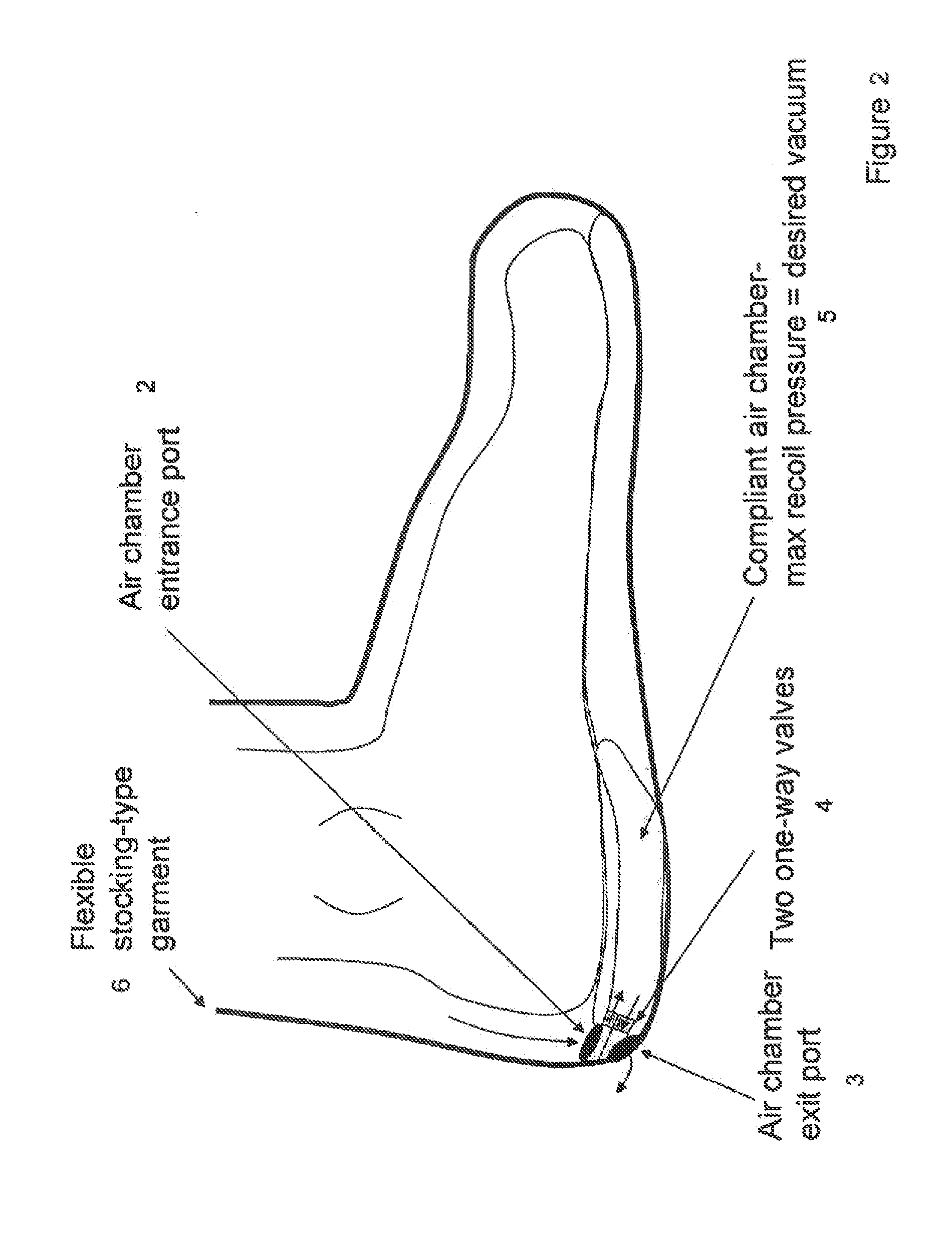Method and apparatus for negative pressure therapy
a negative pressure and limb technology, applied in the field of medical devices, can solve the problems of not considering the generation of negative pressure vacuum compression, the use of circumferential wraps for limbs in the delivery of negative pressure for the purposes of wound healing/prevention/edema control, etc., to improve skin protection and skin care, improve patient convenience and ease of use, and reduce healthcare costs
- Summary
- Abstract
- Description
- Claims
- Application Information
AI Technical Summary
Benefits of technology
Problems solved by technology
Method used
Image
Examples
Embodiment Construction
[0050]The invention is susceptible to many and various embodiments; those embodiments described below should not be interpreted as restrictive, but rather as merely illustrative of the invention.
[0051]As illustrated in FIG. 1, one embodiment of the present invention provides a Dynamic Vacuum Compression Appliance 1 that creates and maintains a self-powered negative pressure vacuum for the control of edema, improvement of venous return, and protection of skin As the negative pressure builds within the stocking (illustrated in FIG. 1), the garment surfaces will draw in around the skin to generate compression for the application of controlled pressure to the limb.
[0052]The Dynamic Vacuum Compression Appliance 1 of FIG. 1 is illustrated in greater detail in FIGS. 2 and 3. The vacuum generating mechanism is intended to be incorporated into an insole-like device designed to be placed inside of standard footwear. This component will incorporate a resilient air chamber 5 and two valves 4 or...
PUM
 Login to View More
Login to View More Abstract
Description
Claims
Application Information
 Login to View More
Login to View More - R&D
- Intellectual Property
- Life Sciences
- Materials
- Tech Scout
- Unparalleled Data Quality
- Higher Quality Content
- 60% Fewer Hallucinations
Browse by: Latest US Patents, China's latest patents, Technical Efficacy Thesaurus, Application Domain, Technology Topic, Popular Technical Reports.
© 2025 PatSnap. All rights reserved.Legal|Privacy policy|Modern Slavery Act Transparency Statement|Sitemap|About US| Contact US: help@patsnap.com



